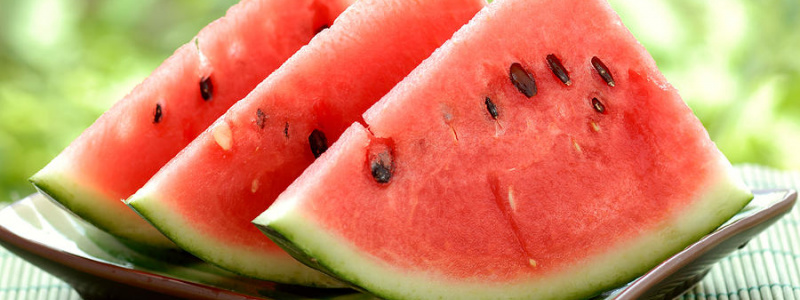What you choose to serve can have a dramatic effect on warm summer days
In weather like this it certainly doesn’t hurt to take a few dietary tips from our neighbours in warmer countries bordering Mediterranean, not to mention the advice of some nutritionists who’ve recently compiled a ‘does and don’ts’ list of what to enjoy and what to avoid on your plate when things get hot.
According to experts, tucking into watermelon, turmeric and reducing the carbohydrates and protein in your diet are all sure-fire ways to create dishes that help customers beat the heat.
Many also believe that a spicy chilli is an excellent choice in hot weather explaining that the capsaicin found in the food sends a signal to your brain that your body is overheated. As a result, you will sweat more to cool your body down.
Working Up A Sweat
Spicy and chilli may seem counter-intuitive, but the part it plays at the heart of cuisine on the searing sub-continent proves otherwise. Opt for traditional tandoori dishes, or even the fish curries of southern Indian regions such as Kerala and you’ll also be delivering big hits of turmeric, a spice with powerful anti-inflammatory properties. Curcumin, which is the active ingredient in the tumeric, helps promote good circulation, helping to speed up your blood flow and thus cool your body down.
There are also plenty of other cooling fruits and vegetables recommended by the Indian practice of aryuvedic medicine, foodstuffs that have been used to help prevent overheating for over 3000 years. Most of these are foods high in electrolytes (the minerals needed to balance the amount of water in the body) which are quickly lost when we sweat excessively, and include bananas, spinach, kale and limes.
Meanwhile, medical practice both ancient and modern recommends the common onion (especially the red variety) for it’s cooling and antihistamine properties, ideal for fending off heat rash and ideally eaten raw in a crisp and cooling salad. Other recommendations include dishes containing coconut milk, thanks to a wealth of beneficial properties that include nutrients for supporting hydration, preventing exhaustion and muscle cramps - so anything from a classic Thai green curry to the tradition Caribbean dish of callaloo provide a sure-fire treat to beat the heat.
Watermelon is another foodstuff that comes highly recommended by long-term residents of hot countries and medical experts alike. Unsurprisingly, it’s high water content is perfect for keeping hydrated and it contains natural sugars for maintaining energy, but most importantly watermelons contain contains citrulline, an amino acid which aides relaxation and helps to dilate the blood vessels, meaning more blood can circulate around your body and cool you down. Hang on to the rinds too as they can be used topically to treat heat rash and burns or (as many South Africans do) pressed to the forehead to cool a headache.
Not For The Hot
When summer temperatures start to soar it’s just as important to know what to avoid eating to keep cool in hot weather, and nutritionist have just as long a list of food don’t as dos.
Obviously diuretic foods (ones that flush water out of the body) are another no-no when it’s so important to stay hydrated, and alongside like coffee and tea this includes foods such as mangoes, fennel, artichokes and asparagus, which have a similar effect on the body.
Furthermore, nutritionists also recommend cutting down on carbohydrate-rich foods, such as rice and wholegrains, and foods high in protein like meat. Digesting protein requires your body to do a lot of work, which also creates heat, in a process known as thermogenesis.
In fact it can take up to twice the amount of energy for the body to break down protein, even compared to carbs – so when the temperature starts to climb remember to deliver meals that go heavy on the salads and light on the barbequed meat!
